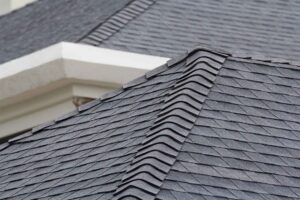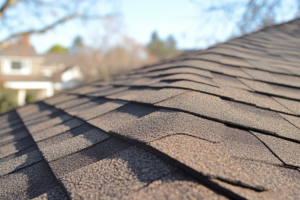Roofs are one part of buildings frequently taken for granted and not given much thought. Replacing a roof involves deciding on which materials are best, while constructing a new building or making an entire roofing change can also involve looking at the roof’s pitch. When considering pitch, what is best and how does it affect materials?
Roof Pitch
 The term “pitch” refers to the slope of a roof, or in other words, the steepness of the angle of the roof. Even “flat roofs” that are commonly seen on large commercial buildings still have a slight slope to allow for drainage, while the roofs on most houses have a noticeable pitch.
The term “pitch” refers to the slope of a roof, or in other words, the steepness of the angle of the roof. Even “flat roofs” that are commonly seen on large commercial buildings still have a slight slope to allow for drainage, while the roofs on most houses have a noticeable pitch.
Considering houses from a design perspective, roof pitch has a real impact on aesthetics, too. Whether the roof can be seen from the ground or not changes the appearance of the building immensely and can make a stark change in a home or commercial property’s appearance.
There are also practical considerations when it comes to roof pitch. Weather conditions, like wind, rain and snow, all play a part in determining which roof pitch would be best for a given building.
The pitch of a roof is expressed in a way that seems odd to those not familiar with roofing. For example, the pitch on a roof may be described as 4/12 or 6/12. This number refers to how much the roof rises vertically every 12 horizontal inches. For example, a roof with a 4/12 pitch rises four inches vertically for every 12 horizontal inches.
Roofing Materials
There are a variety of options for roofing materials. Which materials are best for covering a roof depends on a number of factors, including the desired aesthetic, budget, typical weather, roof pitch and the weight that the roof will hold.
Asphalt shingles have been very common over the years as they offer a good balance of weight, cost and service life. Modern asphalt shingles are also available in a variety of designs.
Metal roofing has become more popular in recent years. Metal roofing is most commonly made of either aluminum or steel, and is available in a variety of colors. Additionally, metal is lightweight and offers a longer lifespan than traditional shingles.
Other options for roofing materials include cedar shake, clay tile and even slate. Each material has its own advantages and considerations, and a professional roofing expert like the team at Roofing by Bruce can discuss your options with you.
Which is Best for My House?
There is no single answer for which roofing material is best since there are many factors involved in choosing a roofing material. The professionals at Roofing by Bruce have been helping people make the best roofing decisions for their home or business in the Poconos of Pennsylvania for many years, and their experienced staff can work with you to determine what your options are and what might be best depending on your weather conditions, budgets and aesthetic preferences.
Call us today at 570-424-7250 to learn how we can help you with your roofing needs.



